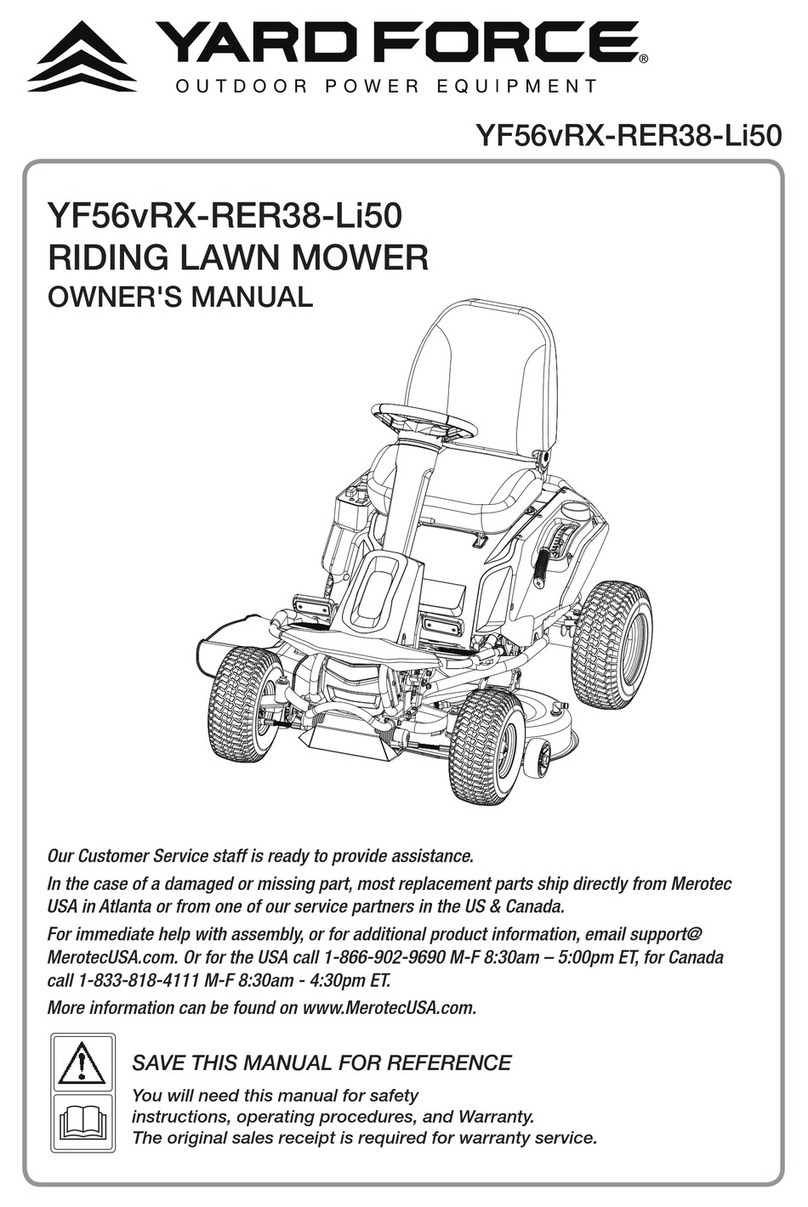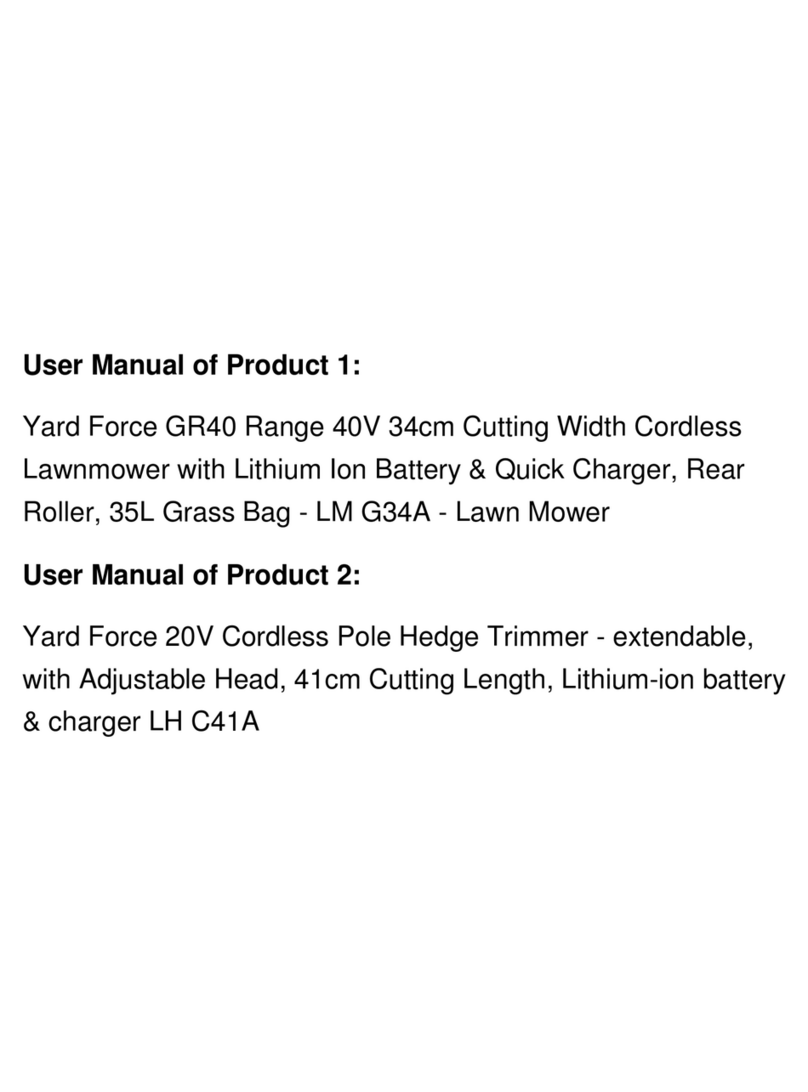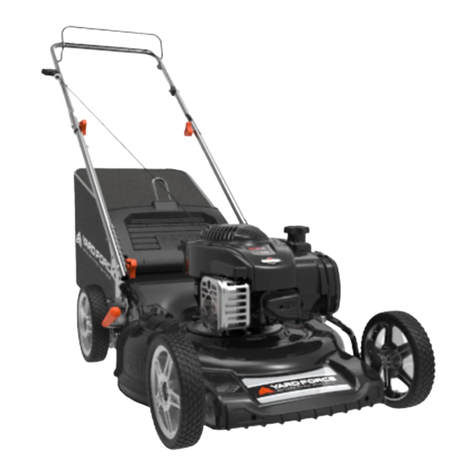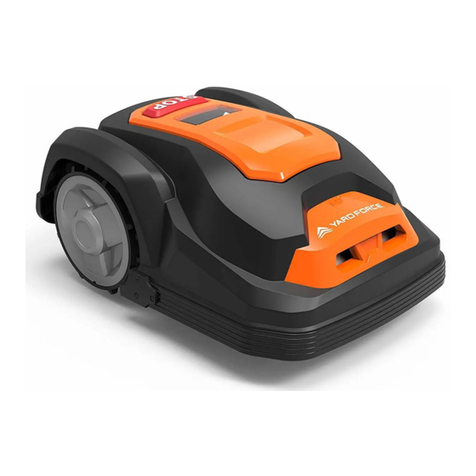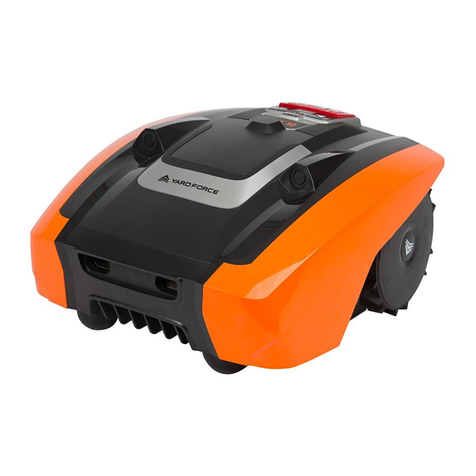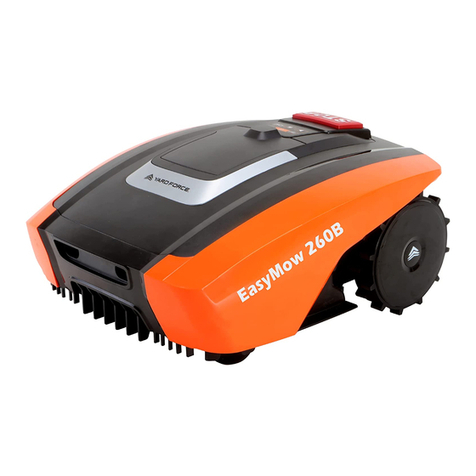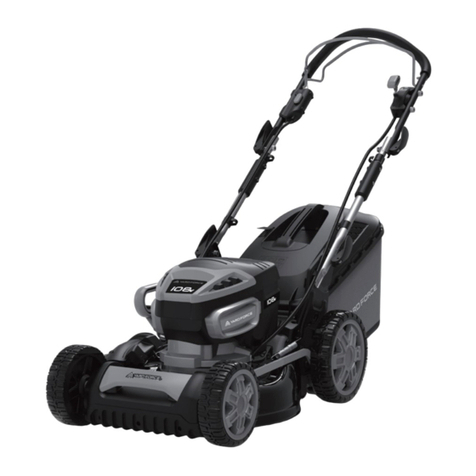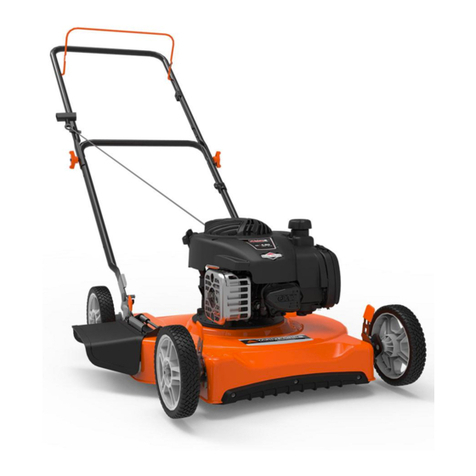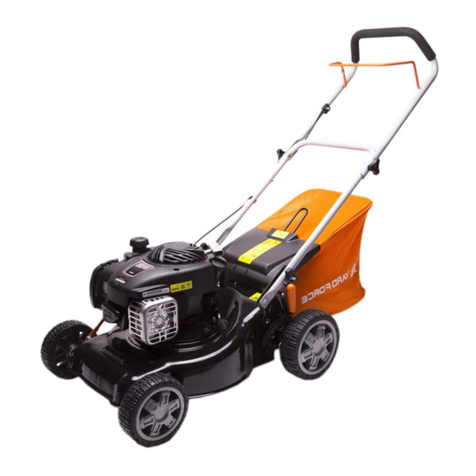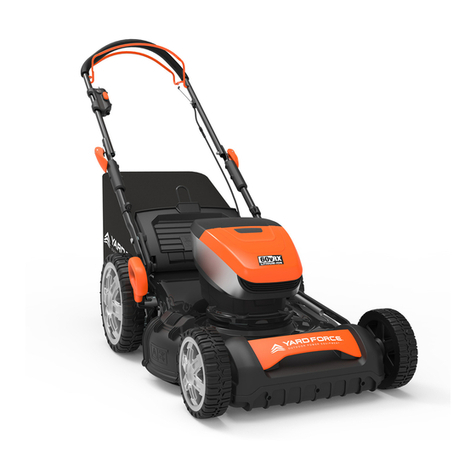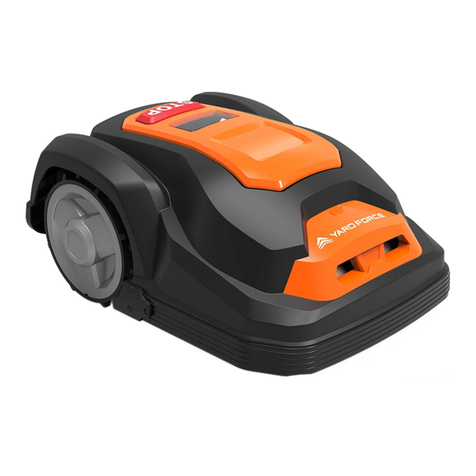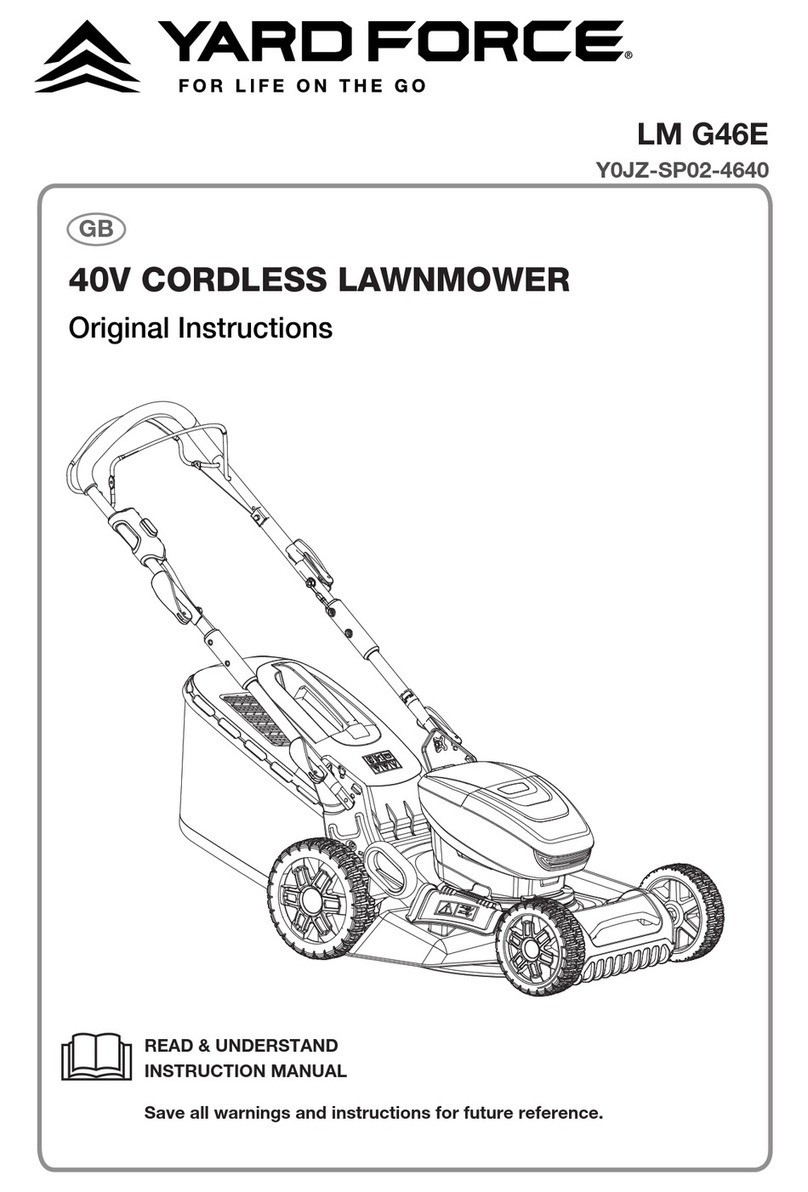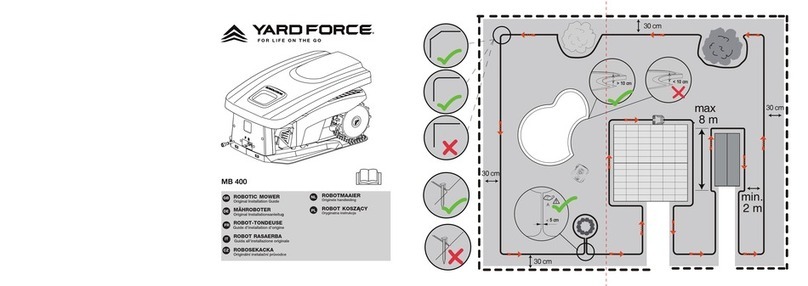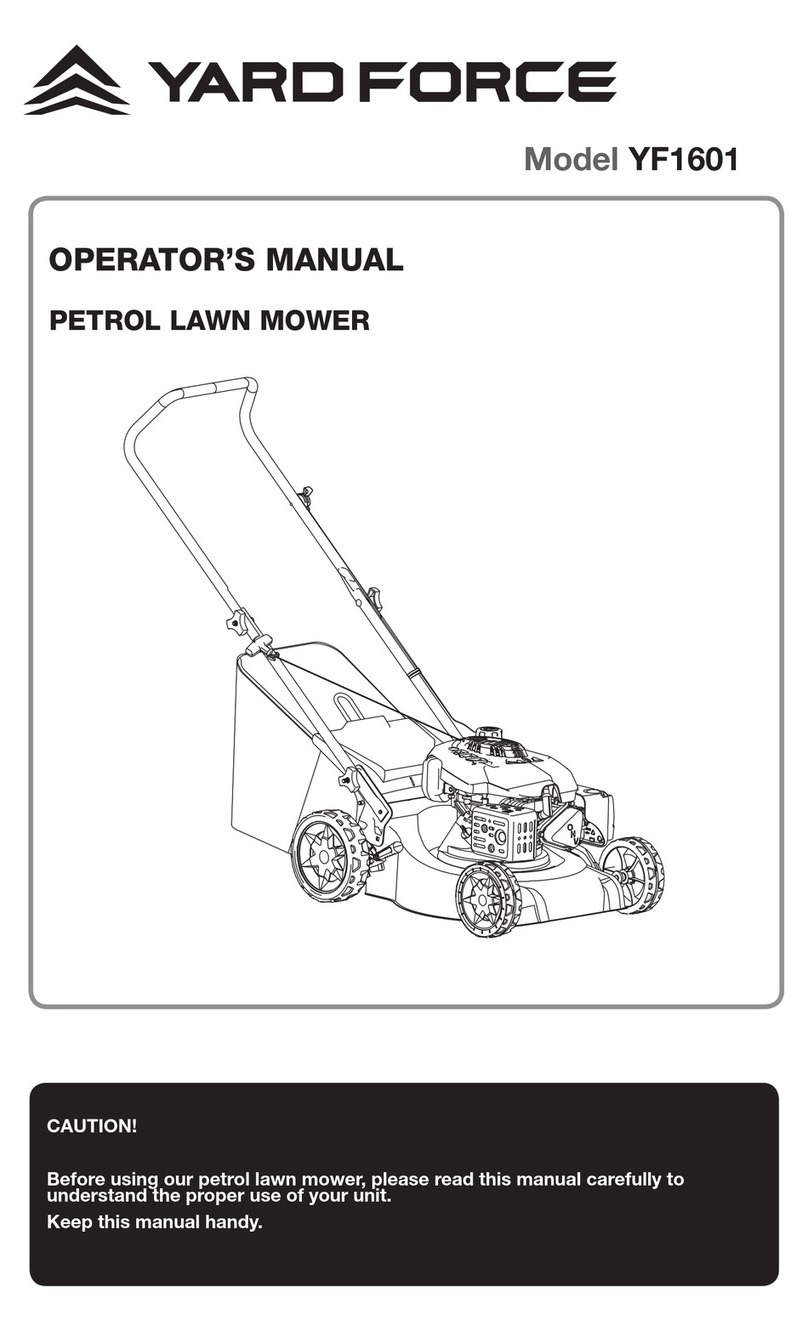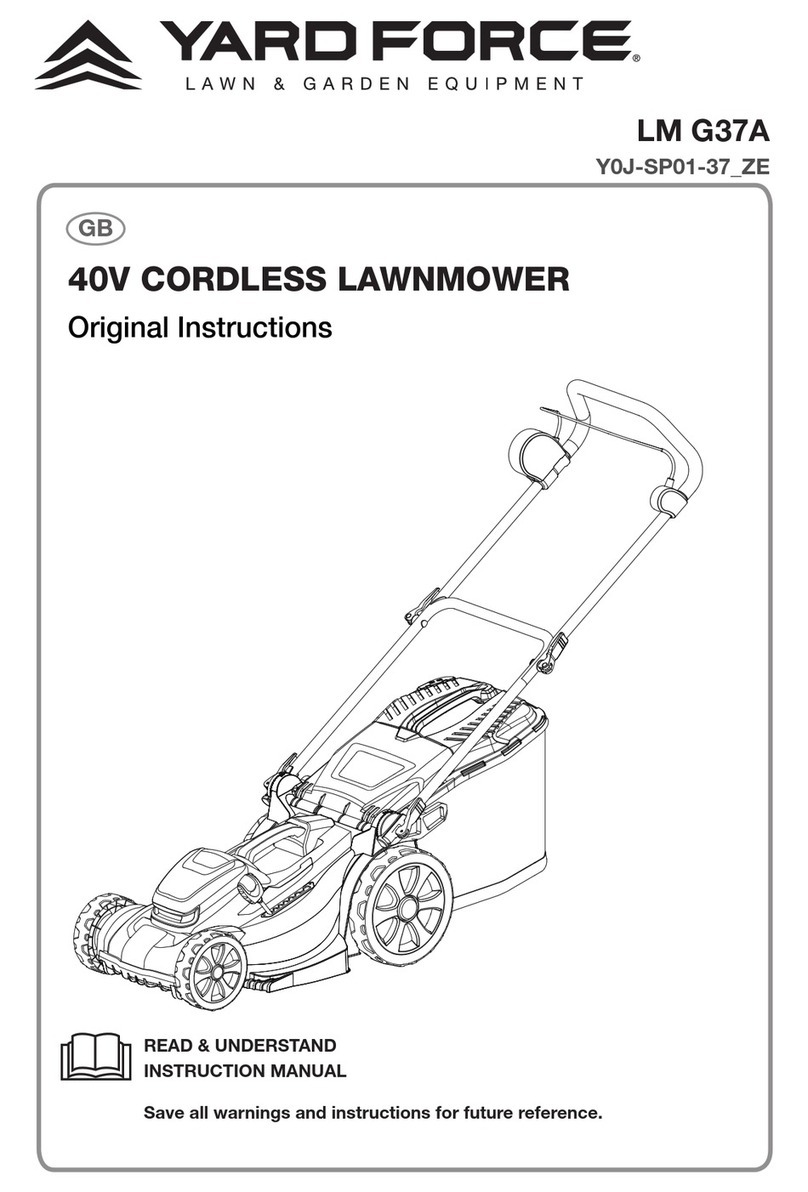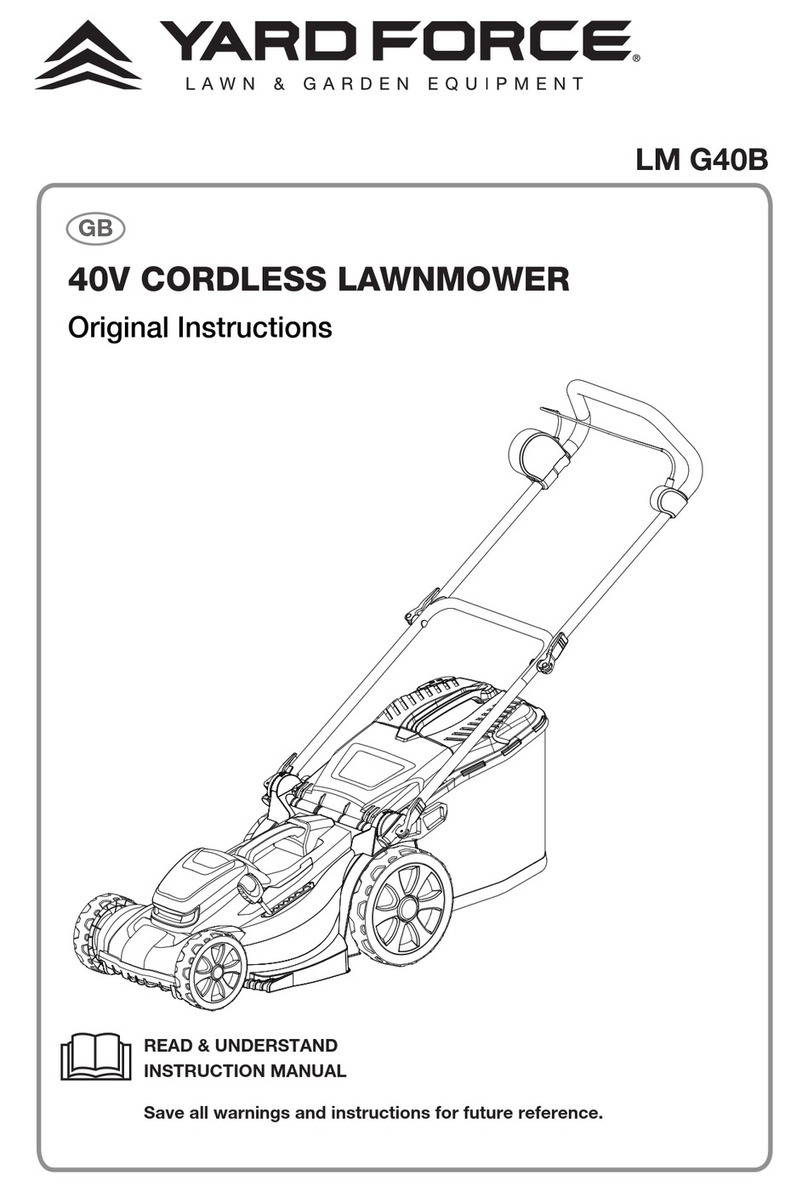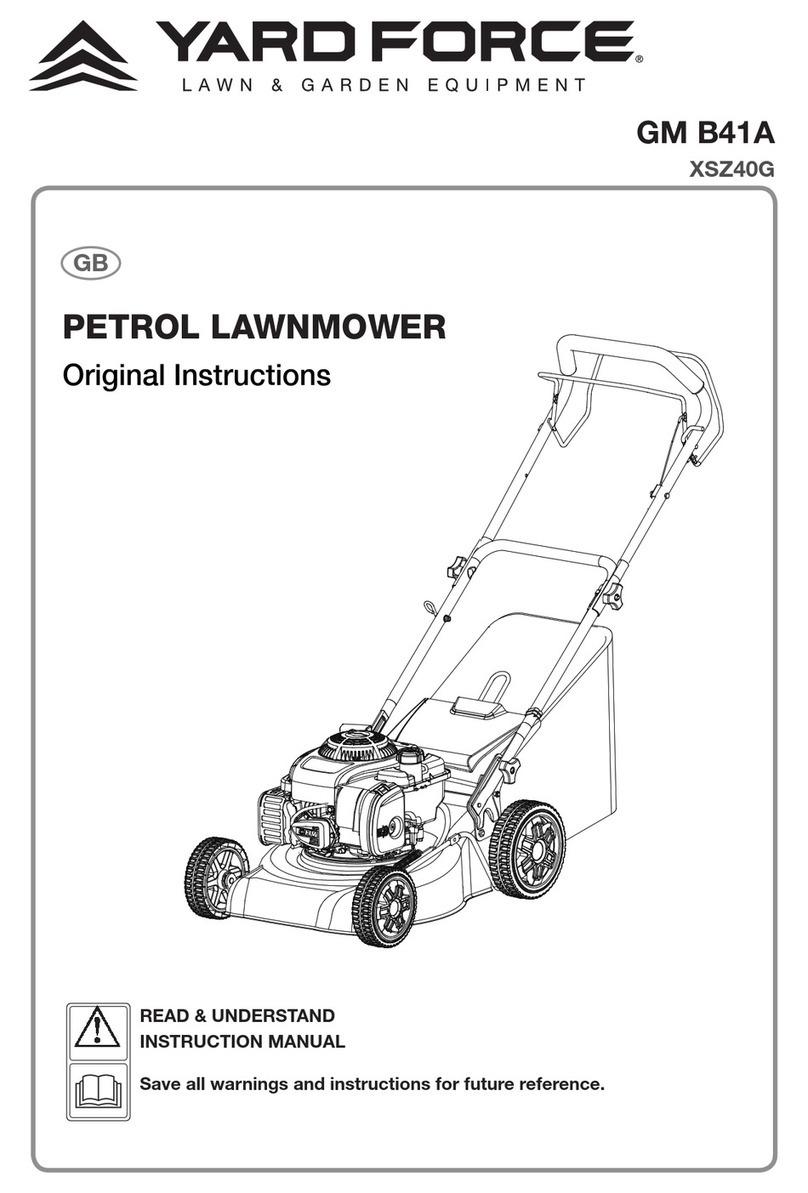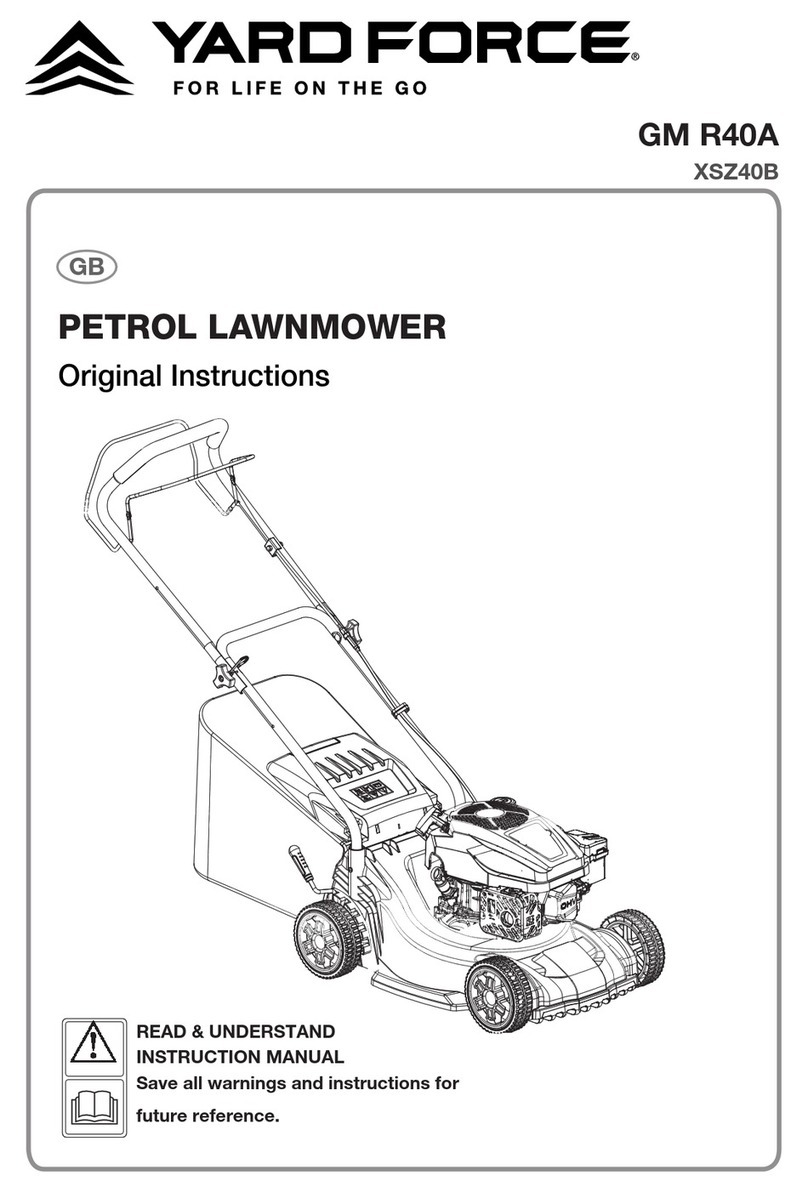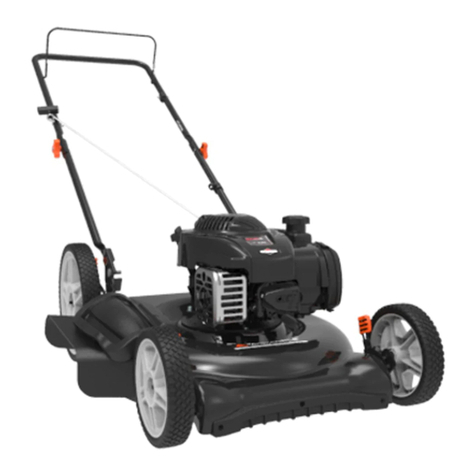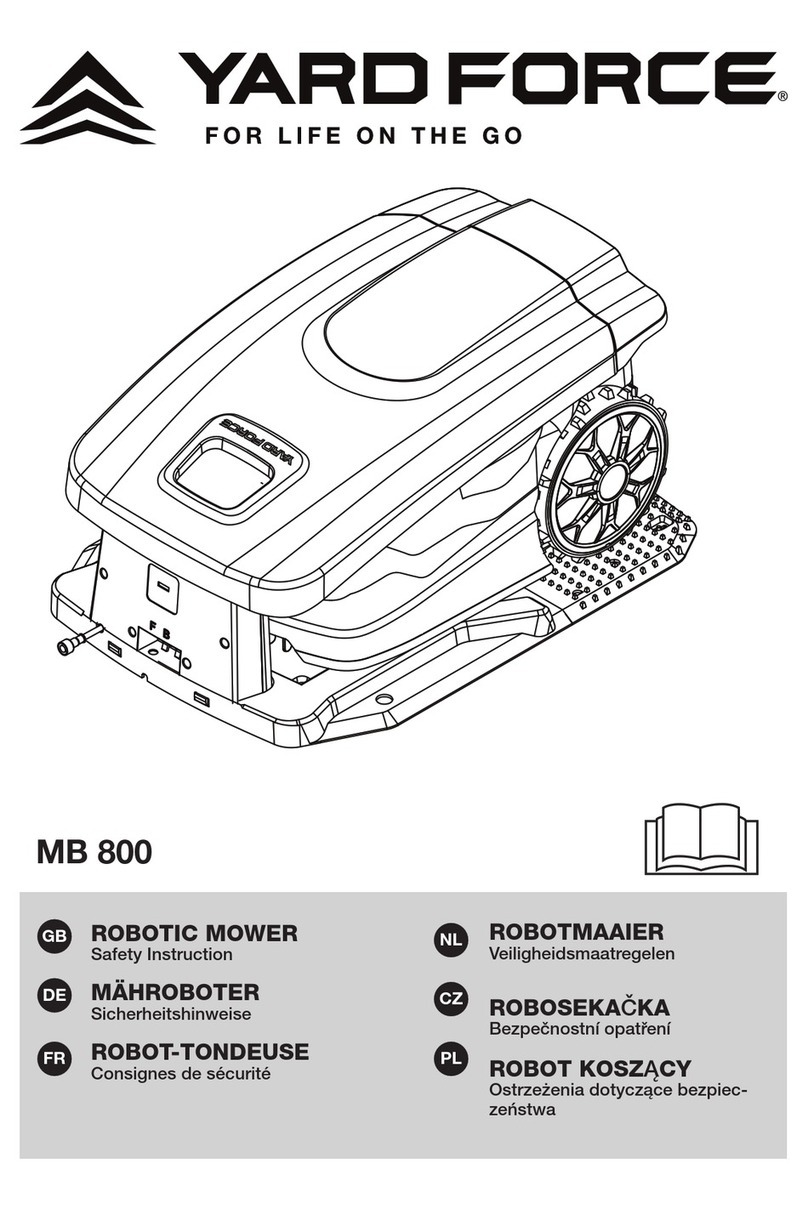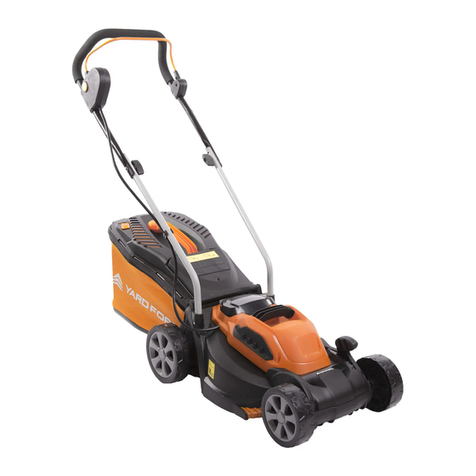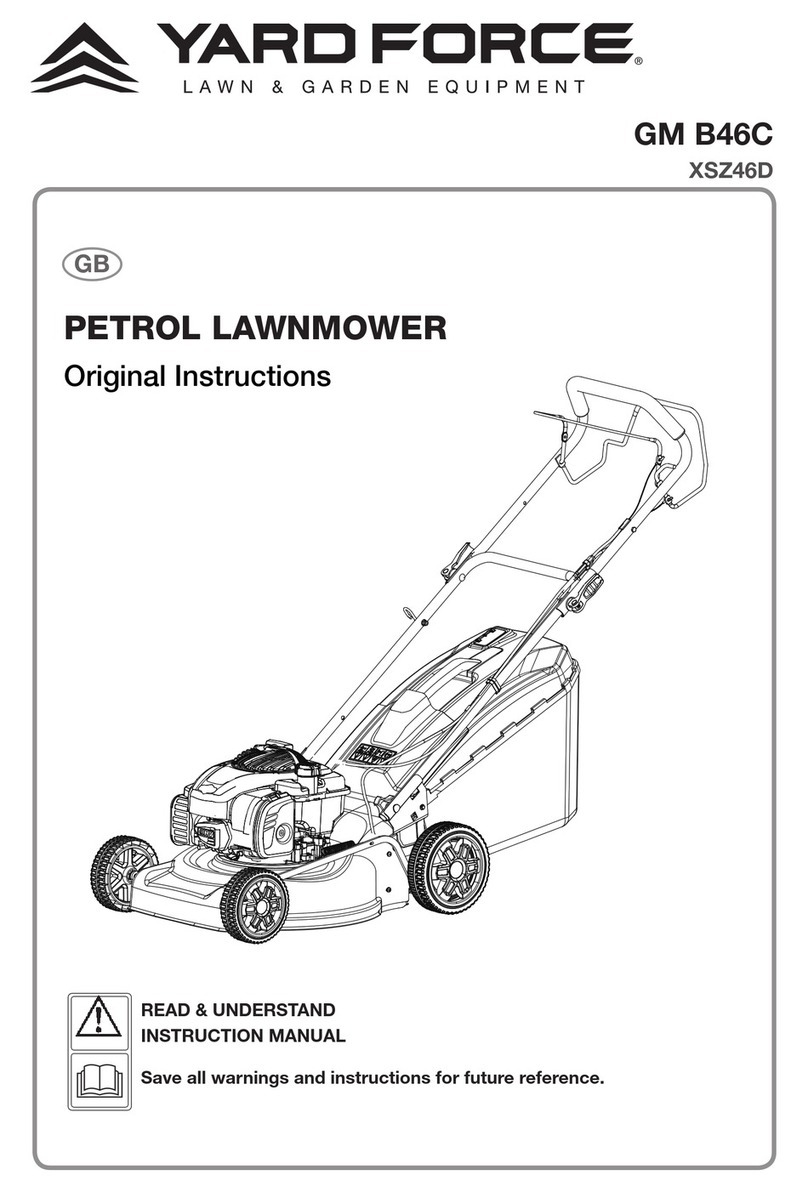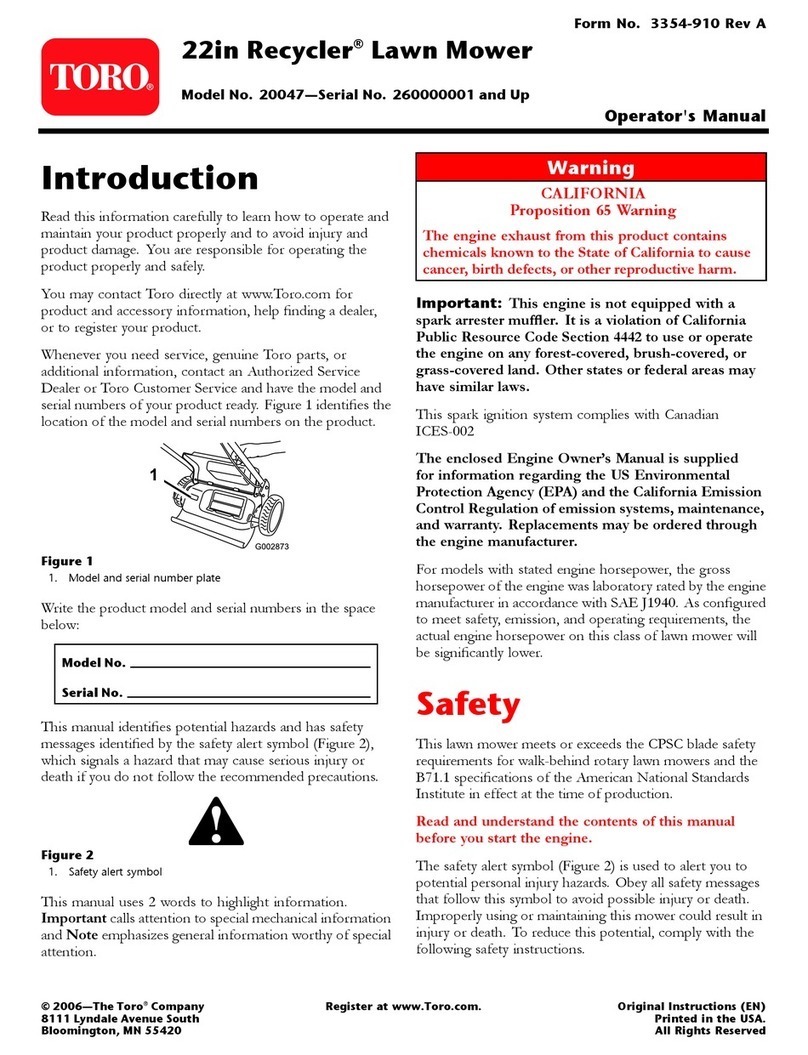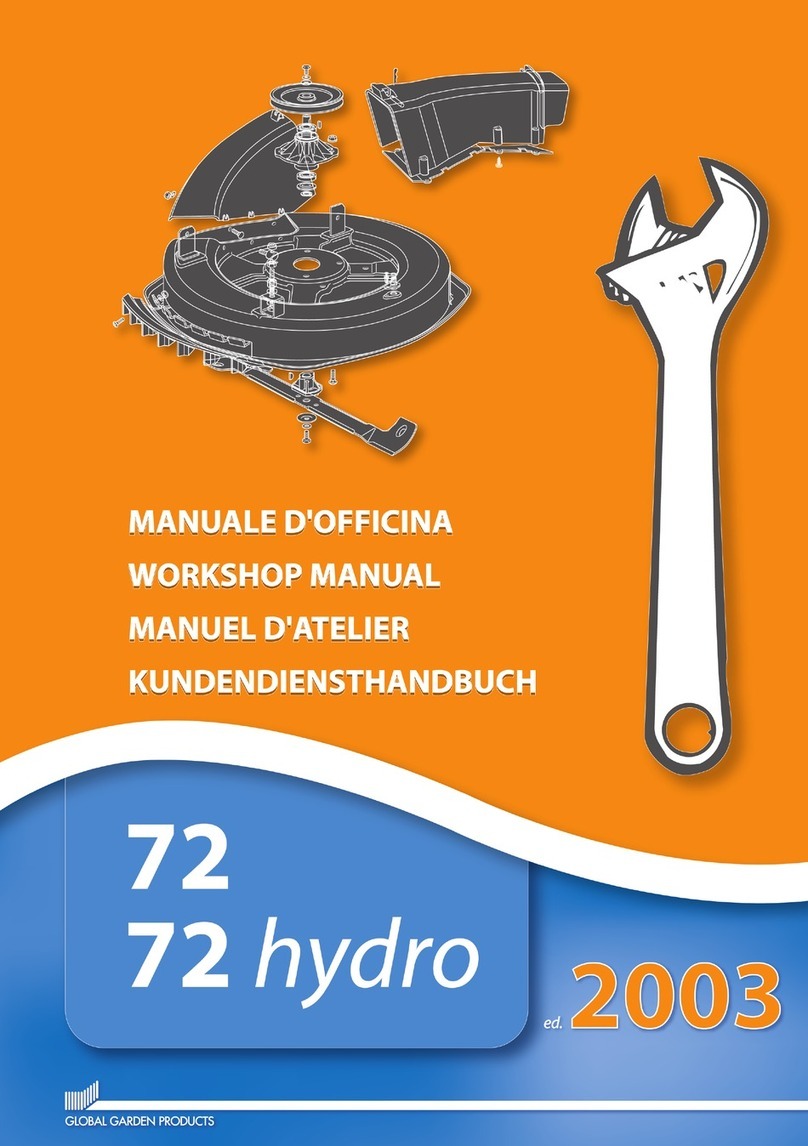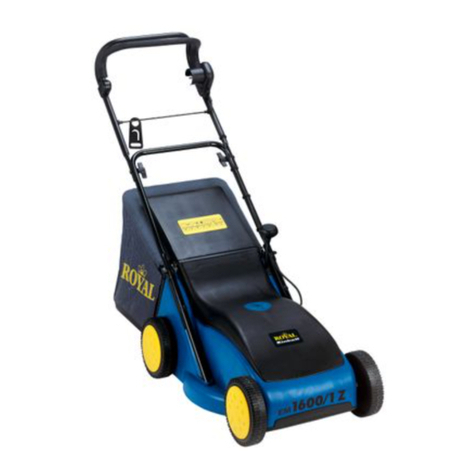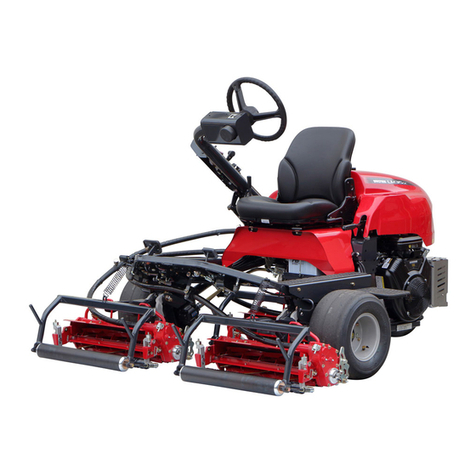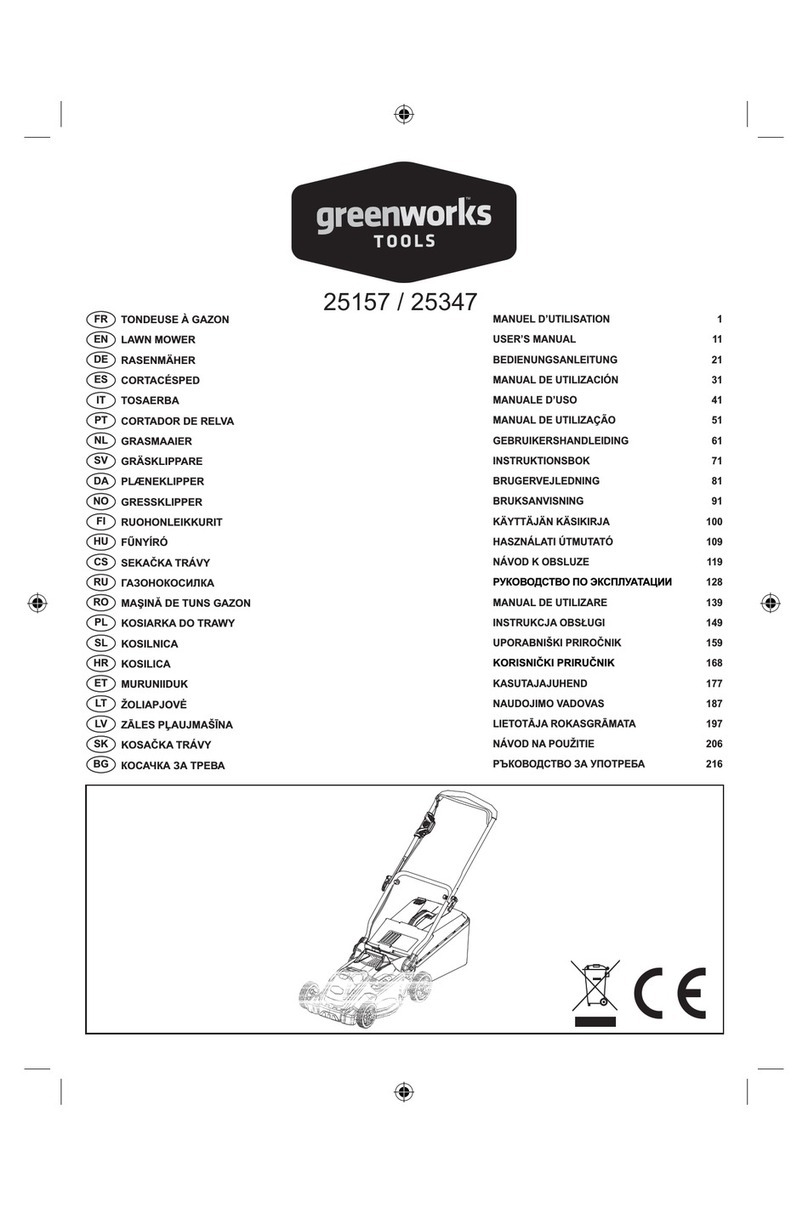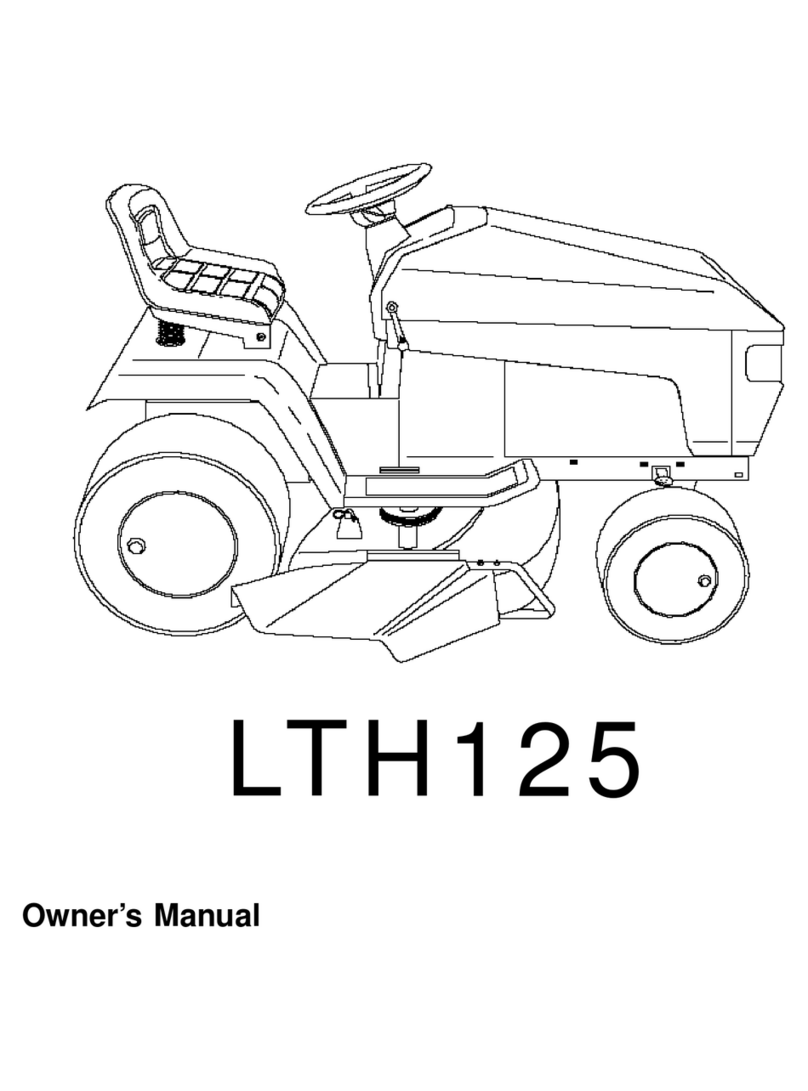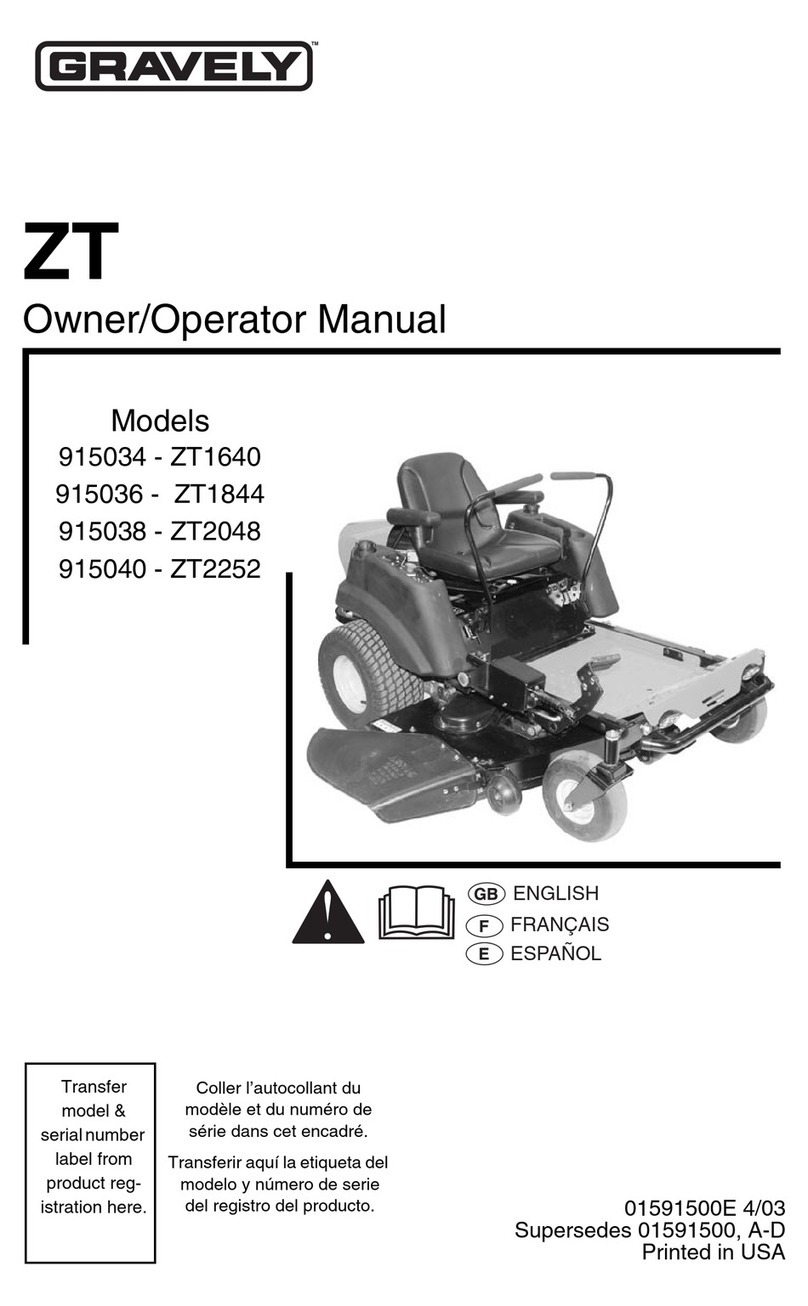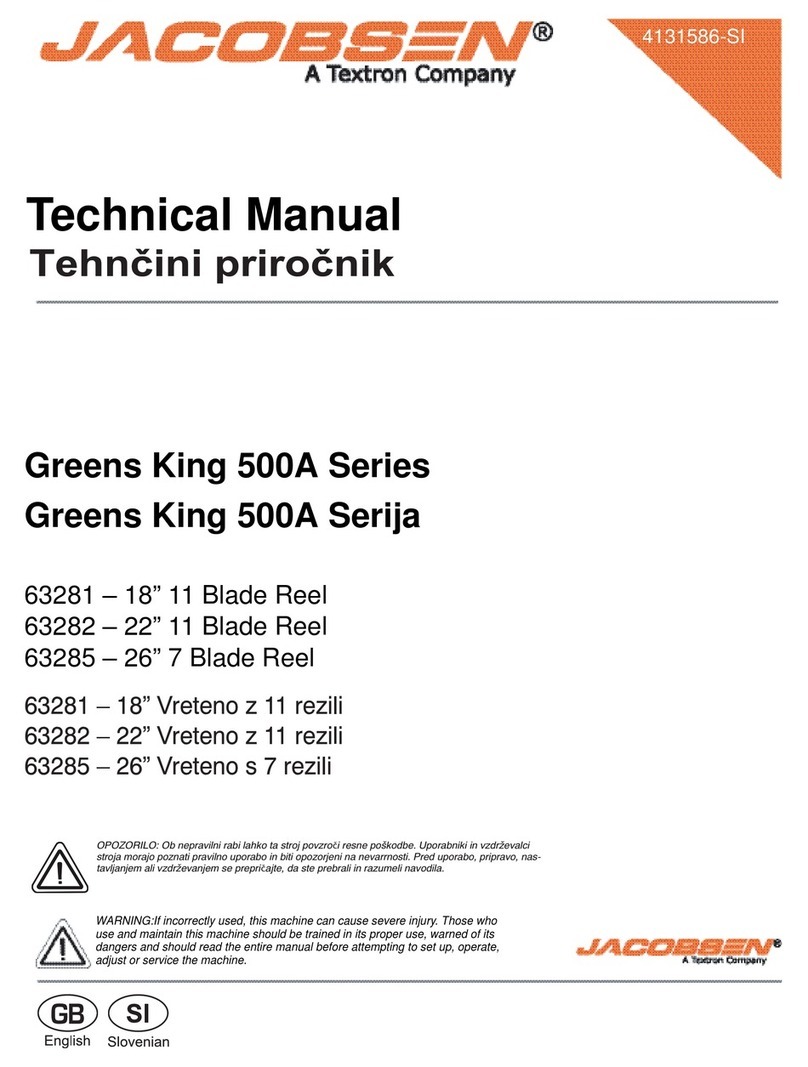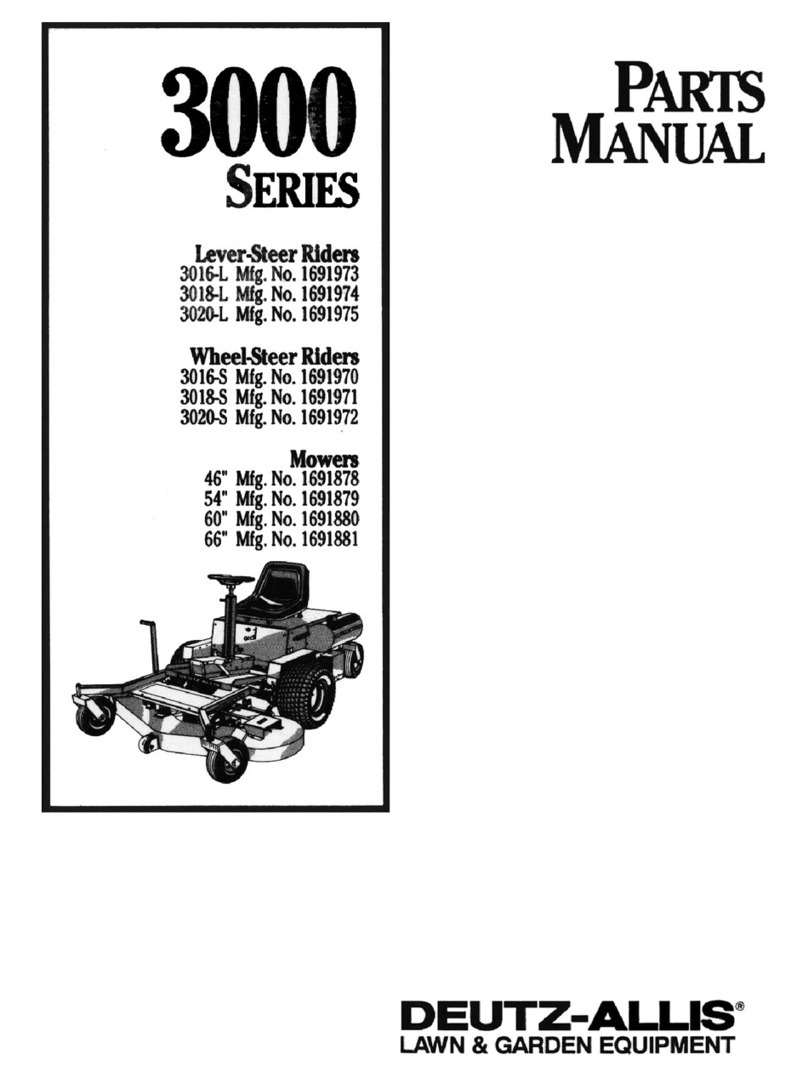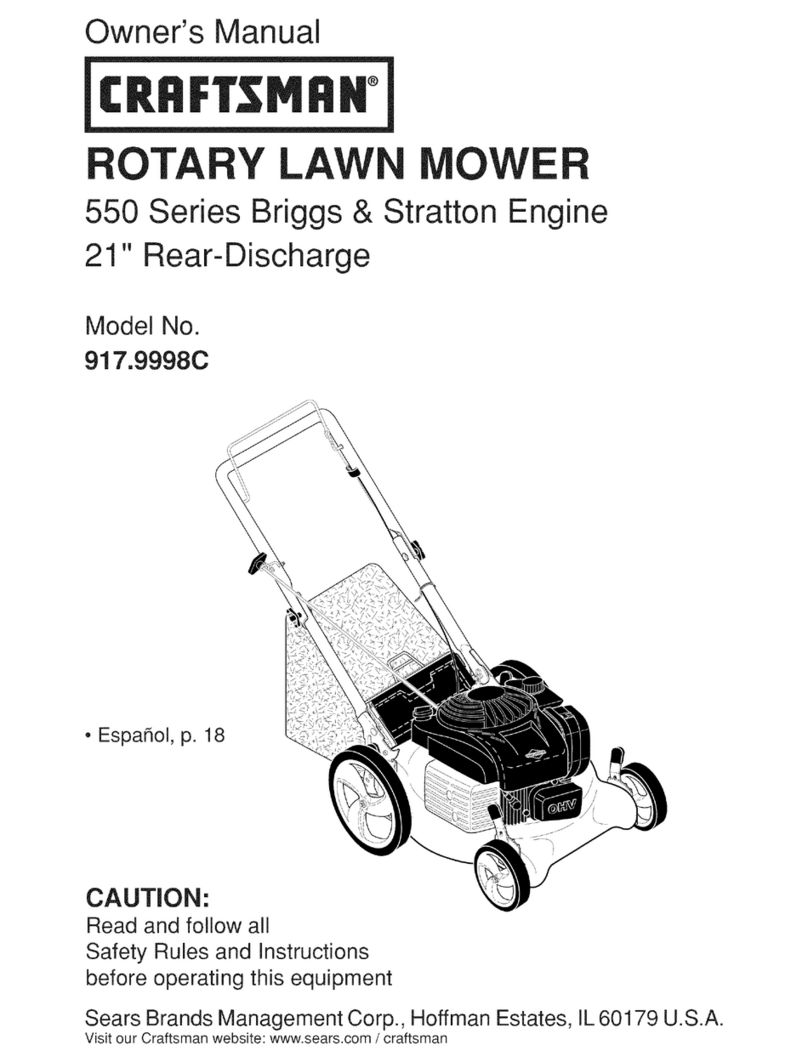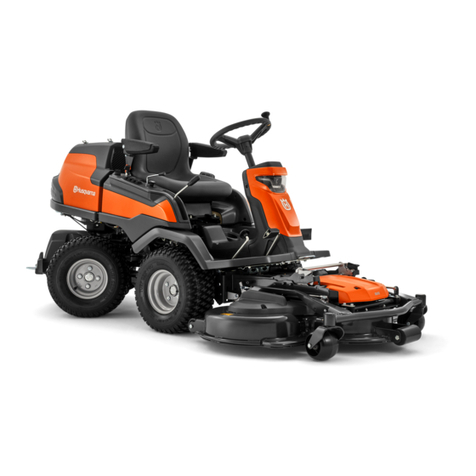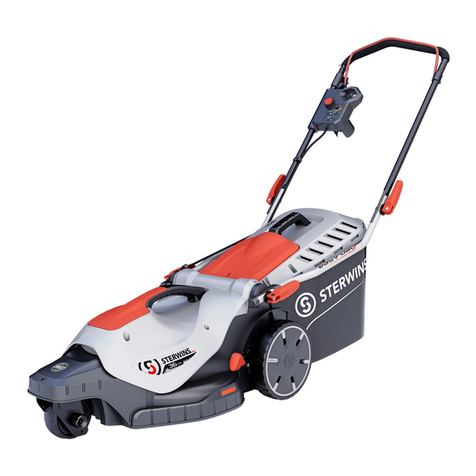
10 11
except if the product must be tilted for starting. In this
case, do not tilt it more than necessary and lift only
the part furthest away from the operator.
15. Do not start the product when standing in front of the
discharge opening.
16. Do not put hands or feet near or under rotating parts.
17. Keep clear of the discharge opening at all times.
18. Do not transport the product while the cutting blade
is running.
19. Stop the product and remove the key/battery pack
from the machine and make sure that all moving parts
have come to a complete stop:
• Whenever you leave the product unattended.
• Before clearing blockages or unclogging chute.
• Before checking, cleaning, or working on the
product.
• After striking a foreign object. Make sure to inspect
the product for damage and make repairs before
restarting and operating the product.
20. If the product starts to vibrate abnormally:
• Inspect for any damages.
• Replace or repair any damaged parts.
• Check for and tighten any loose parts.
Charger
1. Recharge only with the charger specied by the
manufacturer. Do not use the original charger on
other li-ion batteries or on any other type of battery
PRODUCT SAFETY WARNINGS PRODUCT SAFETY WARNINGS
as this can increase the risk of re or explosion.
2. Check the battery charger, cable, and plug before
each use. Do not use the battery charger if damaged.
Do not open the battery charger yourself; charger
must be repaired by qualied personnel using original
spare parts.
3. The charger is designed to use a standard household
120-240 V~ 50Hz power source, ensure that the plug
matches the outlet.
4. Never modify the plug in any way, this will reduce the
risk of electric shock.
5. Do not mis-use the charger cord. Never use the cord
for carrying, pulling or unplugging the charger. Keep
cord away from heat, oil, sharp edges or moving
parts. Damaged or entangled cords increase the risk
of electric shock.
6. Make sure the charger cord is situated so that it will
not be stepped on, tripped over or get damaged.
7. Keep the battery charger clean. Contamination can
increase the risk of electric shock.
8. Protect the battery charger from rain and moisture.
If water accesses the battery charger there is an
increased risk of electric shock.
9. Battery will heat up whilst charging. To reduce the risk
of re, do not operate battery charger on ammable
surfaces such as paper or textiles.
10. The temperature range over which the battery
pack can be charged is typically between 5ºC-
45 ºC. Attempts to charge out with the prescribed
